What Does the End of the Emergency Use Authorization Mean for those Experiencing Health Inequities?
 By Rachel Smith, Chief Program Officer
By Rachel Smith, Chief Program Officer
Health inequities refer to differences in health outcomes that are systematic, avoidable, and unjust. These differences are often related to social, economic, and environmental factors. The COVID-19 pandemic has disproportionately affected certain populations, including racial and ethnic minorities, low-income communities, and persons with underlying health conditions. These disparities are often related to existing health inequalities in our societies.
As part of the Emergency Use Authorization (EUA), some governmental policy exceptions were established to address various pandemic-related health inequities and will need to be addressed going forward. It is important for providers, health plans, and consumers to be aware of the upcoming changes not to exacerbate challenges for these populations. An approach to addressing the changes must be comprehensive and focus on the root causes of disparities in health outcomes.
The goal is to achieve health equity which refers to a concept of achieving fair and equal distribution of resources and opportunities that promote good health and well-being for all individuals, regardless of their social, economic, or cultural background. It involves addressing the social determinants of health, which are the conditions in which people are born, grow, live, work, and age that impact their health outcomes.
Health equity recognizes that individuals and communities face different challenges and barriers that affect their health and well-being and seeks to eliminate these disparities by ensuring that everyone has access to quality healthcare services, healthy food options, safe and affordable housing, education, and employment opportunities. Achieving health equity requires a multi-sectoral approach that involves collaboration between governments, healthcare providers, community organizations, and individuals to address the root causes of health inequalities and promote equitable health outcomes for all.
The EUA is a provision that has allowed the Food & Drug Administration (FDA) to expedite the approval process for various medical products, treatments, diagnostics, and vaccinations during an emergency, (i.e.: a pandemic). In addition, the EUA has provided a mechanism for persons who were on Medicaid to be auto-renewed for coverage during the pandemic. With the EUA ending last month, an ‘Unwinding’ of that temporary policy provision was activated which can result in millions being without health insurance. This Unwinding could involve changes to eligibility criteria, benefit levels, and other program requirements, depending upon each state. Unwinding can also include changes to payment rates for healthcare providers and adjustments to the way Medicaid benefits are administered.
Health plan leaders have a keen awareness of the implications on their members from the standpoint of member attrition and revenue loss and recognize that the Unwinding could result in members’ losing their health coverage, reducing their access to health care, and becoming sicker over time. The revision of Medicaid benefits to consumers requires an immediate comprehensive approach and aggressive redetermination efforts.
Redetermination Efforts Should Focus on the Root Causes of Health Disparities
- Socioeconomic Status: Individuals from low-income communities often experience higher rates of chronic diseases and are less likely to have access to quality healthcare.
- Race and Ethnicity: Historically marginalized populations, such as African American, Indigenous, and People of Color (BIPOC), face higher rates of chronic diseases and lower life expectancies compared to non-Hispanic Whites.
- Discrimination and Bias: Discrimination and bias in healthcare settings can lead to poor health outcomes and decreased access to healthcare.
- Environmental Factors: Exposure to environmental toxins and pollutants, inadequate housing, and unsafe neighborhoods can contribute to poor health outcomes.
- Education: Individuals with higher levels of education tend to have better health outcomes, as education can lead to better job opportunities, higher income, and more access to healthcare.
- Access to Healthcare: Individuals without health insurance or who live in areas without sufficient healthcare resources often experience poorer health outcomes.
Redetermination Solutions to Improve Health Outcomes
Develop plans to address the unwinding of continuous enrollment with members
States are developing plans to address the unwinding of the continuous enrollment provision to include:
- How the State will prioritize the renewals
- How long the State plans to take completion of the renewals
- Processes and strategies the State is considering or has adopted to reduce inappropriate coverage loss during the unwinding period
Eight states have started the process in February, another 15 in March, and 28 states in April. Most states plan to take 12-14 months to complete renewals. Nearly three quarters of all states also plan to follow up with enrollees before terminating coverage.
Create opportunities to promote continuity of coverage
As states resume redeterminations and disenrollments, certain individuals, including people who have moved, immigrants and people with limited English proficiency (LEP), and people with disabilities, will be at increased risk of losing Medicaid coverage or experiencing a gap in coverage due to barriers completing the renewal process, even if they remain eligible for coverage.
States should partner with managed care organizations and community health centers to design and maintain websites, distribute mailers and educational materials, and perform outreach calls in other languages and for those with disabilities, especially Spanish and Braille for renewal efforts.
HCD International’s Proven Healthcare Outreach Efforts
HCD International works with well-known managed care organizations and state health departments to ensure vulnerable, at-risk populations are enrolled in healthcare coverage. Our talented, diverse staff of over 150 full-time professionals from 20 different countries provide culturally sensitive member outreach and educational resources and apply trademarked data analytic tools to provide our clients with the latest metrics, with one goal in mind, to improve health outcomes for all, especially those most vulnerable.
In 2022, HCDI conducted over 10,000 redetermination calls for a major community health plan and nearly 6,000 outreach calls for a county health department to activate or reactivate healthcare coverage. This year, both HCDI teams continue outreach efforts as the Public Health Emergency and EUA are ending.
To learn more about HCD International and how we can support your redetermination efforts, visit www.hcdi.com or contact us directly at info@HCDI.com.
References
10 Things to Know About the Unwinding of the Medicaid Continuous Enrollment Provision | KFF
PHE Unwinding — Impact on Medicaid Redeterminations | L.E.K. Consulting (lek.com)






